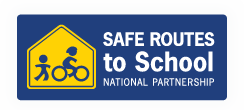An urgent request from the LA Bicycle Coalition:
We are conducting our 2nd bike and pedestrian count in the City of Los Angeles next week over two days. Tuesday, Sept 13th from 7 to 9am and 4 to 6pm and on Saturday, Sept 17th from 11 to 1pm. We still have a ton of locations all across the City of Los Angeles that need your help and the help of your friends & neighbors.
If you could sign-up to volunteer, just for one of the count times it will make a tremendous impact towards the collecting this vital active transportation data. What isn't counted is not funded, and currently the City of Los Angeles and LA County in general are lagging in collecting data on bicycles and pedestrians.
This count is our opportunity to get out there and make sure we are counted. So whether you ride a bike or walk to transit, this count is being held to count YOU!
So please help us make this count possible by signing up to count today. More information can be found here. Login here and see the locations, dates and times available and sign-up today!!!
We are conducting our 2nd bike and pedestrian count in the City of Los Angeles next week over two days. Tuesday, Sept 13th from 7 to 9am and 4 to 6pm and on Saturday, Sept 17th from 11 to 1pm. We still have a ton of locations all across the City of Los Angeles that need your help and the help of your friends & neighbors.
If you could sign-up to volunteer, just for one of the count times it will make a tremendous impact towards the collecting this vital active transportation data. What isn't counted is not funded, and currently the City of Los Angeles and LA County in general are lagging in collecting data on bicycles and pedestrians.
This count is our opportunity to get out there and make sure we are counted. So whether you ride a bike or walk to transit, this count is being held to count YOU!
So please help us make this count possible by signing up to count today. More information can be found here. Login here and see the locations, dates and times available and sign-up today!!!








